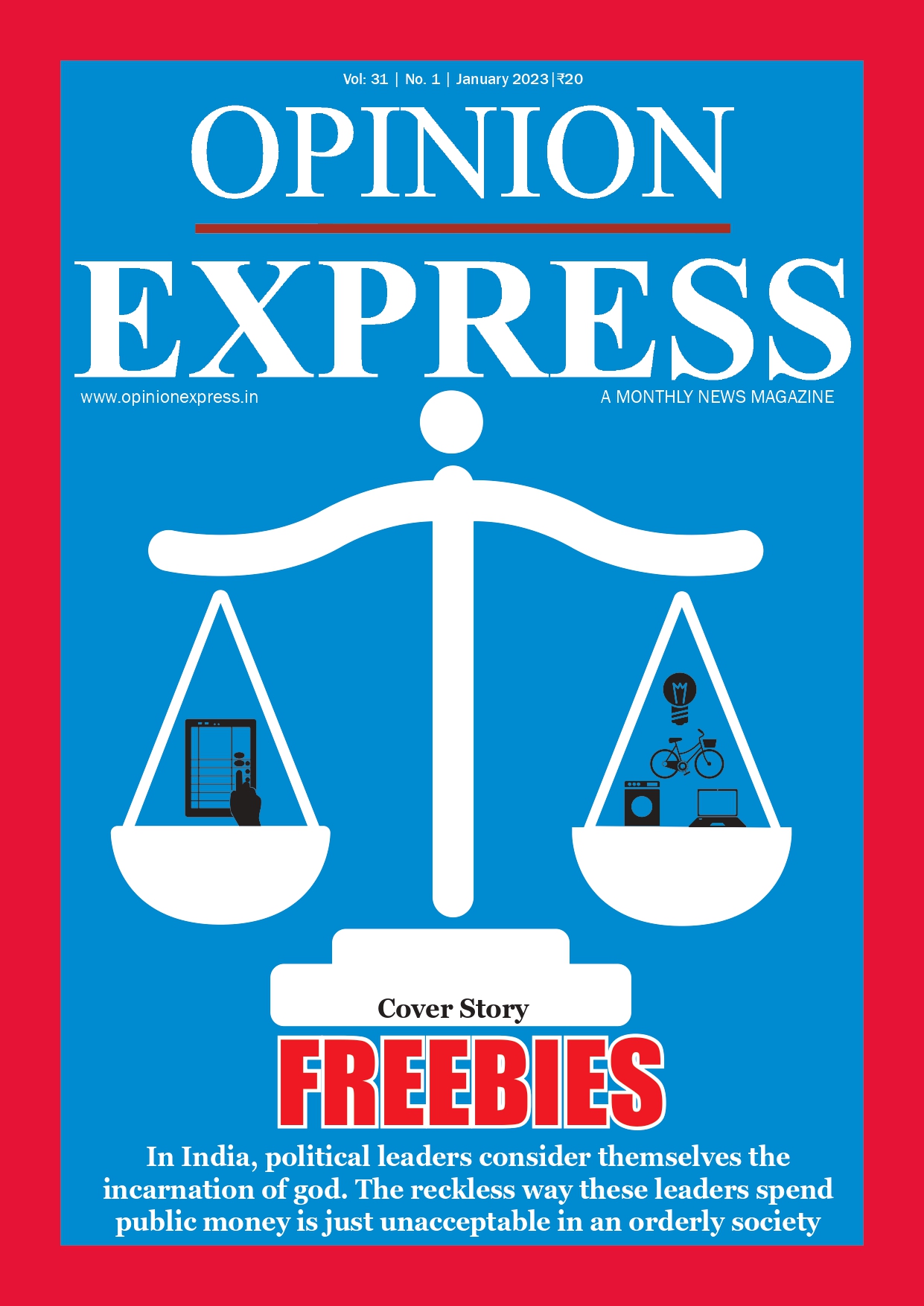How the Delhi High Court resolves ANI v. OpenAI will determine whether India treats AI model training as lawful learning or copyright infringement - a choice that could reshape global debates on authors’ rights, innovation, and the future of generative AI.
The Delhi High Court’s ongoing ANI v. OpenAI case, filed by Asian News International (‘ANI’) against OpenAI’s ChatGPT, is what we can call “a litigation for the coming ages.” ANI alleges that ChatGPT was trained on its copyrighted news content without permission, infringing its exclusive rights. The Court has framed four key issues: (1) whether storing ANI’s protected data to train ChatGPT amounts to copyright infringement; (2) whether using that data to generate responses for ChatGPT’s users amounts to copyright infringement; (3) whether such use falls under the Copyright Act, 1957 (‘the 1957 Act’) qualifies as “fair dealing” under Section 52 of the 1957 Act; and (4) whether Indian courts have jurisdiction considering that OpenAI’s servers are located in the U.S. This case is the first in India to squarely test AI training against copyright, and its outcome could set a global example. As
Gour noted earlier, with “four intervenors, two amici curiae and a litigation for the coming ages,” the stakes are enormous.
India’s Court will decide whether an AI’s ingestion of such material is legally analogous to human learning or requires express licence. Global parallels abound. In the U.S., a related class action (Bartz v. Anthropic) recently settled for $1.5?billion, the largest copyright settlement ever. In that case, Judge Alsup treated ChatGPT-like training on lawfully acquired books as “quintessentially transformative” fair use, but he made it clear that this does not justify creating or using a library of pirated books for training. In other words, he drew a line: training on purchased text could be fair use, but wholesale downloading of pirated content was not.
Crucially, the Anthropic settlement left unresolved whether any AI training on copyrighted material is lawful - the question in ANI’s suit.
In Europe, meanwhile, the latest EU 2019 Copyright Directive (‘EU’s 2019 Directive’) explicitly permits text-and-data mining for research. India’s 1957 Act predates such rules and has no express carve-out for AI.
Legal Landscape: Copyright, Fair Dealing, and AI
India’s 1957 Act vests authors with exclusive reproduction and adaptation rights (under Section 14), subject to exceptions (including Section 52). Section 52 implements a “hybrid” system of exceptions, including “fair dealing” for private or personal use (for research, criticism/review, or reporting current news). None of these exemptions explicitly mentions machine learning or data mining, unlike the EU’s 2019 Directive, which provides specific text-and-data mining exceptions. Thus, whether ChatGPT’s training process can fit any existing exception is contested. The Delhi Court is considering whether simply storing ANI’s news articles for training amounts to infringement under Section 51. Note that “storage” is covered by Section 14(a)(i): reproduction, which Indian courts have interpreted to require “objectively replicating the form of expression.” Additionally, AI models convert text into numerical vectors, rather than human-readable text. If that is true, a strict reading might conclude that no infringing “copy” of the expression is made. But this theory is untested.
The amici curiae and parties have advanced sharply divergent views on fair dealing. Professor Arul Scaria (first Amicus) submitted that the Delhi High Court has jurisdiction as OpenAI’s services are accessible in India, including ANI’s headquarters in Delhi. He argued that storing copyrighted material for training AI models was permitted under copyright law. What the High Court had to determine was whether OpenAI used ANI’s content for anything beyond training. He noted that restricting such use could hinder knowledge dissemination. On the use of ANI’s content in AI outputs, Scaria pointed out that ANI must first establish its copyright over the content. If ANI’s material is used to paraphrase facts rather than directly reproduce content, it may not amount to infringement.
Advocate Adarsh Ramanujan (second Amicus), on the other hand, submitted that the location of OpenAI’s servers was irrelevant. He explained that the High Court had jurisdiction, since ANI’s principal place of business was in New Delhi. He argued that copying ANI’s data, even once, without permission, constituted a copyright infringement. OpenAI’s use of ANI’s content does not qualify as fair dealing under Indian law since OpenAI is neither a news agency nor using the content for criticism or review. He submitted that reproducing ANI’s content in ChatGPT’s responses constitutes copyright infringement, especially if it results in economic harm to ANI by reducing subscriptions from media outlets.
These questions are not unique to India. Under U.S. law (Section 107), fair use is a broad, flexible defense evaluated by four factors. U.S. courts have focused on transformative use - whether an AI’s training “turns the text into something qualitatively new.” Judge Alsup’s Bartz opinion exemplifies this approach: he deemed an LLM’s consumption of lawfully obtained books “among the most transformative [things]…we will see in our lifetimes,” likening it to how humans learn by reading, and held such training a fair use. (By contrast, he refused to excuse the use of pirated books.) In practice, U.S. litigation has split: in NYT v. OpenAI, discovery battles are ongoing about harm to news models; in Raw Story v. OpenAI, a court dismissed a DMCA claim for lack of standing, emphasising that plaintiffs must show actual copying or harm. Meanwhile, Article 3 of the EU’s 2019 Directive explicitly mandates a copyright exception for text and data mining with no opt-out options for scientific research purposes. Whereas Article 4 permits authors to opt out in case of commercial activities. This proactive legislative answer is lacking in India. The UK has similarly introduced non-commercial computational analysis exceptions.
India’s courts must navigate familiar debates (is training “fair”? is sampling non-expressive?) but on the basis of much cruder statutory tools.
Nota Bene
Section 14(a)(i) grants authors exclusive rights to reproduce or store copies of their works. If OpenAI’s training involves ingesting and storing ANI’s articles, then the Court must decide whether this “storage” (even in digital form) is a reproduction of ANI’s expression. Even if storage were deemed copying, does ChatGPT’s generation of answers “use” ANI’s work in an infringing way? OpenAI notes that ChatGPT does not regurgitate entire articles verbatim; it synthesises facts. The Court will have to decide if an AI’s indirect use of protected expressions, without literal copying, violates the reproduction or adaptation rights. If reproduction is found, can it be excused by Section 52? Is feeding ANI’s content to an AI more like researching, or like a newscaster plagiarising? This final issue may hinge on drawing analogies. If treated like “research,” training might fall under Section 52(1)(a)(i); if not, the use arguably needs permission.
These issues are being debated at hearings with intervention from publishers’ associations. For example, the Digital News Publishers Association warned the Court that unchecked use of copyrighted content by AI erodes journalists’ incentive to create, warning that if ChatGPT freely swallows news, a large chunk of news organisations may die out. The Federation of Indian Publishers has made similar submissions. Industry defenders emphasise that generative AI merely compiles public facts without copying protected expressions. The Delhi Court (Justice Amit Bansal) will have to sort through these issues and set a course for how the Copyright Act applies in the AI era.
Normative Gaps and Judicial Discretion
Beneath the technicalities lies a fundamental policy dilemma: how to balance authors’ incentives against innovation and public benefit. Indian copyright exists to “promote the progress of science and useful arts” (akin to the U.S. constitutional mandate) by rewarding creativity, while not unduly hindering expression and learning. Training AI on text straddles this divide. On one hand, publishers insist that their labour deserves protection and compensation. On the other hand, proponents of AI argue that large-scale text analysis is a new form of learning, akin to a researcher digesting books, which serves societal progress.
The choice is stark. If the Court effectively rules that LLM training falls outside fair dealing - i.e., it requires a license - it would vindicate authors’ rights but risk curtailing a rapidly growing technology. AI developers might then need to negotiate expensive licenses for vast swathes of data (assuming rights-owners even choose to license). This could slow innovation or drive development underground, with generative AI firms wary of entering the Indian market. An outright “no fair use” stance could determine whether India offers a tech-friendly copyright framework. Indeed, if courts baulk at AI training, the government might be forced to legislate a new exception or regulation to fill the gap.
Conversely, if the Court interprets fair dealing broadly to cover machine “learning”, it would boost innovation but anger content creators who see their works scavenged. A cavalier ruling in favour of AI could be seen as the state conferring a monopoly (in effect) on data, which arguably undermines copyright’s purpose. Balanced against this is the fact that AI training does not publish the original texts. One view is that ChatGPT outputs are composite and factual, and do not substitute for the original news. If the law treats non-verbatim summarising as non infringing (as U.S. courts have suggested by emphasising transformation), Indian courts could analogise that language.
Notably, India’s law provides no simple doctrine of “transformativeness” or “derivative works” as in U.S. law. The U.S. idea of a “derivative work” and the transformativeness test are tied to provisions of the U.S. statute (17 U.S.C. §106). The Indian Act contains no explicit “derivative work” right or fair use blanket. Borrowing U.S. doctrine in toto is perilous. Indian courts have long hesitated to import foreign tests that lack a statutory foothold. This suggests the judiciary must either craft a novel Indian principle or stick strictly to Section 52’s letter (with all its gaps).
The lack of any clear statutory exception for AI is a serious gap. Unlike the EU, India has no “opt-out” system or mandatory notice filter for publishers; in fact, ANI itself has unilaterally blocklisted its website to prevent ChatGPT training. The Parliament has not updated the Act for the digital-age AI, and it may not do so quickly. In the interim, courts must navigate policy.
Authors argue that the law is a living system and must be viewed through a constitutional lens prioritising creativity, dignity, and the public interest. A judgment that reflects these values might, for example, read Section 52(1)(a)(i) (research) generously to include certain forms of model training, provided that outputs do not infringe. Alternatively, it could confine the exception to non-commercial research uses, pushing commercial AI companies towards licensing and thereby preserving market incentives.
Ultimately, the Delhi Court must reconcile competing normative claims. The amici have already signalled the tension: Scaria urged the law to adapt to foster innovation, whereas Ramanujan emphasised what the law currently is. The judiciary’s role is to bridge this. It should examine whether allowing AI “learning” without compensation truly serves the constitutional purpose of innovation and free expression, or whether it unfairly departs from the legislative bargain. Authors argue that Copyright law should remain neither petrified nor atavistic but should flexibly accommodate AI-driven creativity.
Beyond legal analysis, practical considerations also matter. The outcome could influence press freedom and public information. ANI has warned of misinformation and reputational harm from AI hallucinations, raising broader social stakes. Conversely, an overly restrictive rule could stifle local AI initiatives and cede ground to foreign companies. The Court’s decision must therefore be informed by a range of inputs: economic and technological policy, comparative law, and the broad ethos of copyright. It may even prod Parliament to act. The judiciary should not shy away from highlighting that need if it cannot itself fashion a fair solution.
Toward Doctrinal Clarity and Courage
The ANI v. OpenAI case offers a critical opportunity for India to lead on AI and copyright. The Court’s determination will offer scarce guidance to courts worldwide wrestling with the same issues. As the dust settles, what is needed is clear, principled guidance - not muddled mimicry of foreign tests. If the Delhi High Court ultimately endorses a broad view of fair dealing for AI (for instance, treating training as akin to research), it should carefully circumscribe that exception and explain how output regulation will protect authors. If it rejects such a reading, it should stress the legislative void and possibly urge Parliament to craft new rules. In either event, the ruling should articulate the reasoning transparently, advancing a balanced, incremental path that privileges creativity, dignity, and the public interest.
In the global context, India’s verdict could either affirm authors’ primacy or embrace technological change, or attempt a middle way. The Constitution’s promise of promoting science and the arts demands no less than weighing both sides. As Samuelson reminds us, courts “must ask which outcome best serves the constitutional purpose” of innovation while balancing incentives and free expression. The Delhi Court must now summon the institutional courage to answer that question. Only with such courage can it provide the doctrinal clarity Indian creators and innovators alike sorely need in the AI era.
First author: Harsh Gour is a columnist with The Leaflet. His research focuses on the intersections of technology, law, and public policy, with a particular interest in AI governance, digital rights, and data protection.
Second author: Loveleen Jain is a law graduate from Government Law College, Mumbai, and is currently pursuing a Master’s in Intellectual Property Law at Durham University, UK. She is an aspiring solicitor with a strong interest in Intellectual Property and its intersection with Artificial Intelligence.








 OpinionExpress.In
OpinionExpress.In















Comments (0)